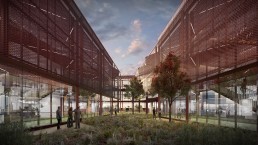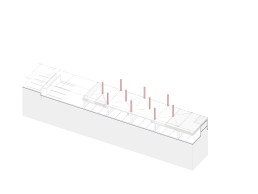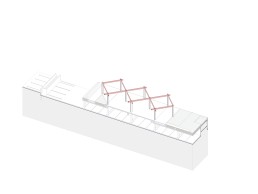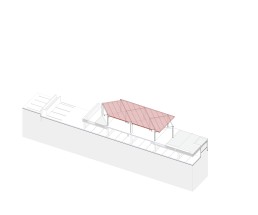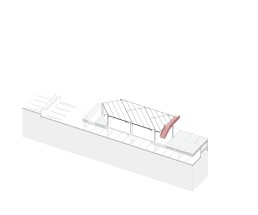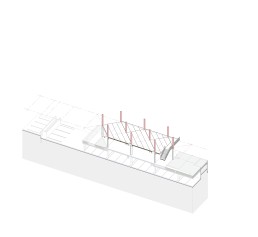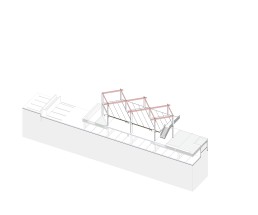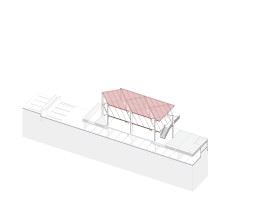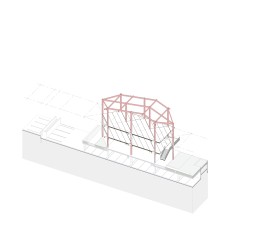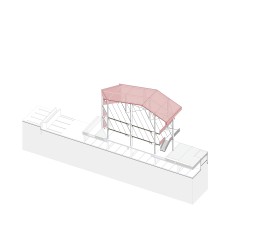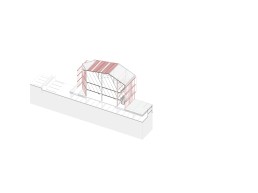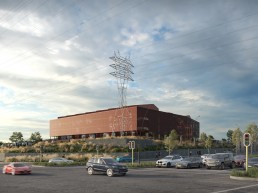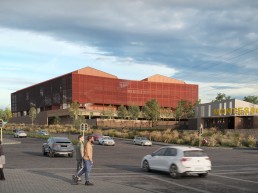The Boogertman + Partners team was tasked with designing a net-zero, multi-tenanted office building with a flexible floorplate; a gesture towards sustainability on a systematic and spatial level. Located on a prominent street corner, at the heart of the young Waterfall City development, the site and client brief presented an opportunity to challenge the way we conceptualize, shape, and construct our future commercial spaces.
Born out of this notion was the idea to investigate Mass Timber as an alternative construction material – as well as the mandate to integrate renewable, efficient, and decentralised systems that deal with electricity generation, water collection, sewerage treatment, and passive thermal control.
The building can be understood as three distinct portions. The first, a permanent and robust concrete base, includes the moulding of the landscape into an activated pedestrian connection between the building and the street corner, and a raised concrete podium structure which carries the building above a semi-basement parking and comprehensive services plant area. Breezeblocks assist in screening these spaces, whilst promoting passive ventilation. The podium slab is thickened to accommodate a planted courtyard, which is tucked between two three-storey office wings that are constructed fully of mass timber.
In order to accommodate this second portion, the timber-structured office space – a new grid, which intersects the concrete base grid at 45degrees, was introduced. Designed in collaboration with Mass Timber Technologies – the modular, floor-to-floor timber assembly is comprised of timber columns fixed to the concrete base, timber beams, and composite timber floor panels. This build-up is repeated for each level, concluding with the assembly of the timber portal frame roof structure. The resulting stepped façade and roof line, expressed in roof sheeting, PV panels, and wall panels, utilizes the opportunity of the diagonal grid to curate the orientation of glazing for maximum energy efficiency and solar shading.
Internally, the freedom to adjust the footprint of the floorplate and position of partitioning walls, allows maximum flexibility and the capacity to accommodate a variety of tenants in whatever shape or size. Apart from its adaptability, potential for easy assembly and disassembly, and low embodied energy – mass timber is also proven to have significant environmental and psychological benefits by virtue of its warm haptics, rendering it a perfect biophilic material for use in future office spaces.
The third distinct building portion, an external-coloured steel mesh skin fixed to a secondary sub frame, constitutes a porous secondary façade and shading device. Contributing to the building’s tapestry of texture, permeability, and warmth in colour and materiality, it helps to express the building’s identity as a symbol for sustainability and adaptability.
